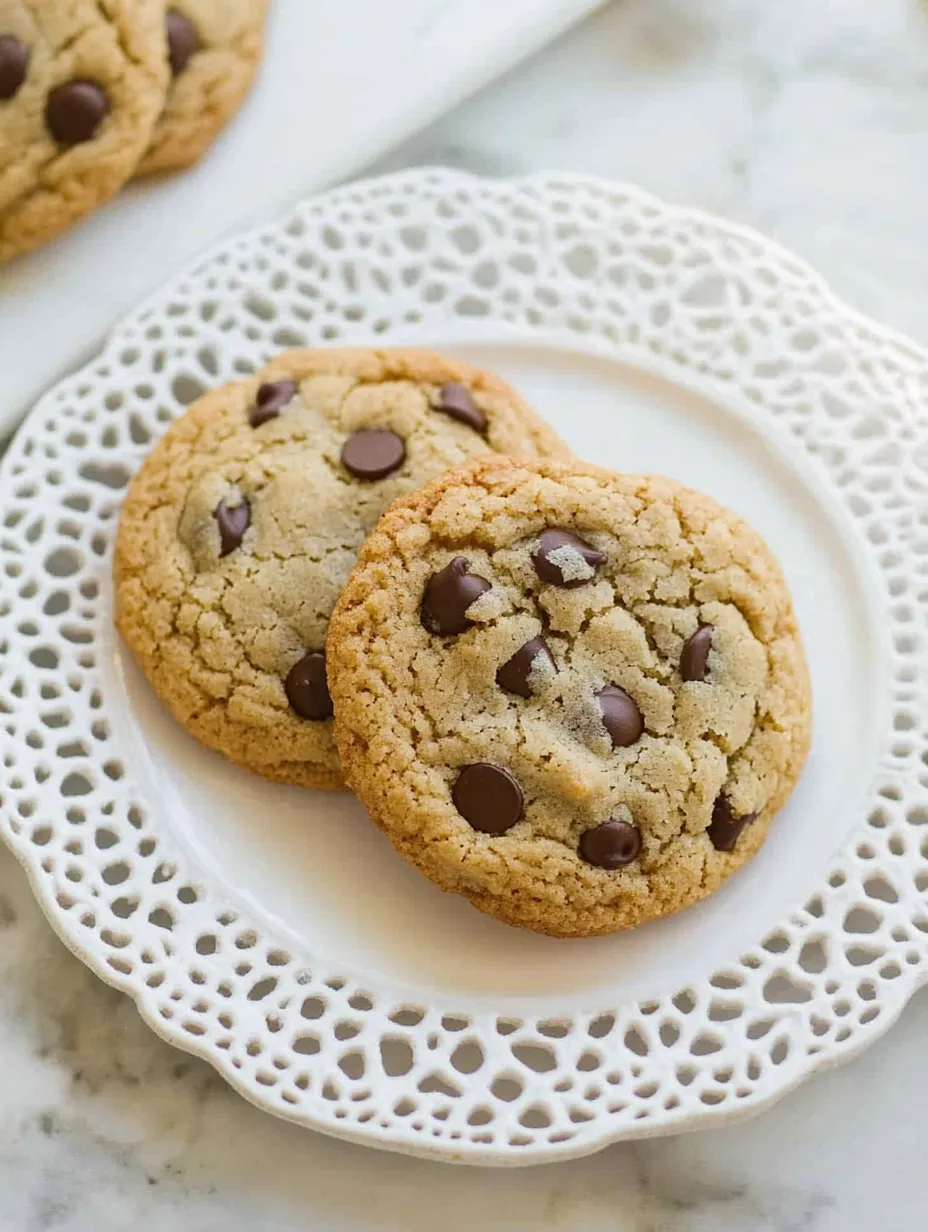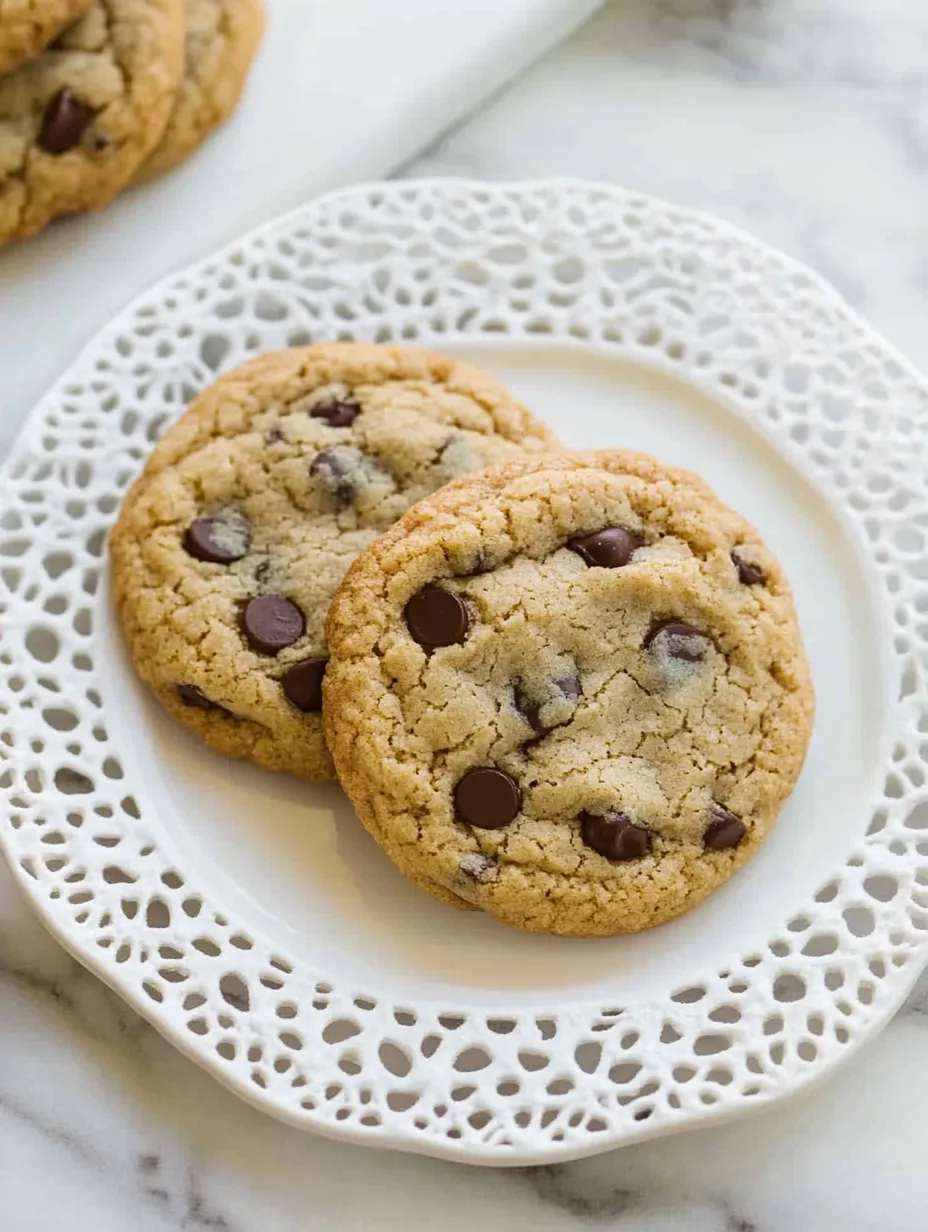 Pin it
Pin it
This mouthwatering almond flour chocolate chip cookie transforms into a divine gluten-free dessert with crispy edges and soft middles. I stumbled upon this winner while hunting for treats my friend with gluten issues could eat, and now it's become my favorite that gets thumbs up from everyone, regardless of diet restrictions.
I first baked these for a Christmas cookie swap and got so many people asking how I made them that I now always keep almond flour stocked up. They get gobbled up even faster than regular wheat cookies whenever I bring them anywhere.
What You'll Need
- Butter: let it sit at room temp for that rich cookie foundation
- Coconut oil: brings extra moisture and helps create that perfect crunch outside
- Brown sugar or coconut sugar: gives that deep taste and makes centers nice and chewy
- Vanilla extract: boosts all flavors and really brings out the nuts
- Large eggs: keep everything stuck together and give structure
- Baking soda: provides the right amount of rise without making them too fluffy
- Kosher salt: cuts the sweetness and makes chocolate taste better
- Blanched almond flour: creates a soft texture and subtle nutty background
- Chocolate chips: pick good ones that melt nicely
- Toasted walnuts: you can skip these, but they add great crunch and more nutty flavor
How To Make Them
- Get Ready:
- Heat your oven to 175°C (350°F) and put parchment on your cookie sheet. This stops cookies from sticking and makes cleanup way easier. Getting the temp right matters a lot for how they turn out.
- Mix Wet Stuff:
- In your mixer bowl, beat the soft butter, coconut oil, and brown sugar until it's fluffy and light colored, for about 3-4 minutes. This puts air in the mix which helps texture. Add vanilla and eggs, mixing until smooth. Don't worry if it looks a bit separated at first.
- Add Dry Stuff:
- Mix in the baking soda and kosher salt really well. Then add the almond flour bit by bit, mixing after each addition. This way you won't get flour everywhere and it mixes better. The dough will feel softer than regular cookie dough.
- Put In Extras:
- With a wooden spoon, lightly mix in the chocolate chips and toasted walnuts if you're using them. The wooden spoon helps you avoid mixing too hard which can make cookies tough. Make sure the goodies are spread throughout the dough evenly.
- Form And Cook:
- Make tablespoon-sized balls of dough and set them on your lined baking sheet with lots of room between them. They'll spread while baking, so keep about 8 cm (3 inches) between each one. Bake for 11-13 minutes until the edges look golden but the middles still look a little soft.
 Pin it
Pin it
I found out how amazing it is to toast the walnuts first during a wet, dreary day of baking. My whole house smelled incredible, and that one little extra step turned these cookies from pretty good to absolutely unforgettable. Now my hubby asks for these instead of the cookies his mom made him as a kid.
Keeping Them Fresh
These almond flour treats get soft pretty fast once stored. For best results, keep them in a sealed container at room temp for up to 3 days. Put parchment between the layers so they don't stick together. If you need them to last longer, freezing works great. Freeze the totally cooled cookies separately, then put them in a freezer bag. They stay good for about 2 months in the freezer.
Easy Changes
You can tweak this recipe to match what you have or need diet-wise. For cookies without dairy, swap the butter for more coconut oil or a plant butter. You can use just coconut sugar instead of brown sugar for more of a caramel taste. Try breaking up dark chocolate bars instead of chips, or throw in some dried cherries with the chocolate for an amazing flavor combo.
 Pin it
Pin it
Fixing Problems
If your cookies flatten out too much while baking, your dough probably needs cooling down. Just put the shaped dough balls in the fridge for 30 minutes before you bake them. Since almond flour doesn't have gluten like wheat flour does, sometimes you need this cooling step. If your cookies seem too dry and fall apart, you might've packed too much almond flour when measuring. For best results, fluff up the flour before you scoop it gently into your measuring cups.
Frequently Asked Questions
- → Can I swap almond flour with regular flour here?
Not really—almond flour acts differently because it’s rich in fats and doesn’t have gluten. This recipe is tailored for almond flour and won’t turn out right with standard flour unless you make significant changes.
- → Why combine both butter and coconut oil?
Mixing butter and coconut oil gives these cookies a perfect texture—rich flavor from the butter, plus a tender, chewy texture from the coconut oil. The combo really upgrades the cookie game!
- → What can I do to stop my cookies from flattening out?
Popping the dough in the fridge for about 30 minutes helps firm the fats, so your cookies spread less while baking. Also, make sure your oven is hot and avoid overly melting the butter before mixing.
- → Could I use almond meal instead of almond flour?
Totally! Almond meal works fine, but because it includes almond skins, the texture will be a little more rustic and the cookies might look slightly different. The taste? Still amazing.
- → What’s the best way to store these cookies?
They’re tastiest fresh, but if you have extras, keep them in an airtight container at room temperature for 2-3 days. Want them to last longer? Freeze the cookies for up to 3 months or keep the raw dough in the fridge for up to 5 days.
- → Is there a vegan-friendly version possible?
You bet! Swap butter with more coconut oil or vegan butter, and use flax eggs (1 tablespoon ground flaxseed mixed with 3 tablespoons water per egg). The texture may vary a bit, but they'll still taste wonderful.
